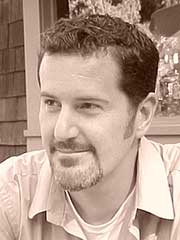Richard Kos

Lecturer AY-B
Urban and Regional Planning
Current Research Activities
There are two predominant components to my research interests: Geographic Information Systems (GIS), and methods for effective community engagement in the neighborhood planning process. As for the first, GIS is computer technology that turns location-based data (e.g. demographics, survey findings, addresses, etc.) into maps that can be analyzed for patterns and to build spatial knowledge. I am particularly interested in methods to convey the technology to my SJSU students in an engaging and memorable way but, even more so, in a manner that boosts their chances for landing jobs and internships by possessing this powerful skill set. I'm always thrilled when a student contacts me to excitedly announce that he or she secured a position thanks to their new-found GIS skills! I keep a log of such messages at home and I'm well into my third dozen! Aside from GIS, I work under the umbrella of CommUniverCity San Jose to engage teams of graduate students with leaders in central city neighborhoods to conduct a comprehensive community assessment, which is a documentation of current conditions in the community. My students bring the time, energy, and solid research skills, and the neighborhood leaders provide the local "lived expertise" about their home. Together, we use the finished assessment as a platform to identify a Top Ten list of planning priorities for the neighborhood, such as improved street lighting, more public open space, or safer streets for pedestrians and cyclists. Both the assessment report and the Top Ten list can be powerful lobbying tools to improve central San Jose communities.
Research Connections to Current Events
I say this often, but I have the great joy of waking up in the morning and knowing that I get to play a small role in the professional development of my graduate students in the Dept. of Urban & Regional Planning. As the department's Practitioner-in-Residence, I bring over twenty years of processional experience into the classroom and seem to have a knack, I'm told, for conveying enthusiasm and great optimism for our chosen field. I've lost track of the number of students who told me that my teaching approach results in them being astounded by how much solid, resume-building work they can accomplish in just one semester. Being able to operate in a university setting, which I feel is intrinsically optimistic, forward-looking, and exciting, is a thrill for me. More specifically, collaborating with my kind-hearted, smart, and inquisitive students never gets old. I also have the advantage of closely monitoring their work habits and interpersonal qualities in the classroom and, over time, identifying especially promising students who can assist me with my research efforts. It's a classic "win-win".
Personal Connections to Research
I've purposely tried to maintain a solid footing—both in my research and in the classroom—in the two areas that excite me most: GIS technology and progressive urban planning. As a certified urban planner I am committed to fostering a range of housing, transportation, and employment choices for the communities I serve, but only if they pass a variety of sustainability tests. I am not at all motivated to perpetuate low-density suburban sprawl which, in the words of James Kunstler, is probably "the greatest misallocation of resources in the history of the world". I believe strongly that with progressive urban planning communities can provide choices in living arrangements for all tastes and life stages, but I don't believe that we need to spread out mindlessly into the hinterlands to do so.